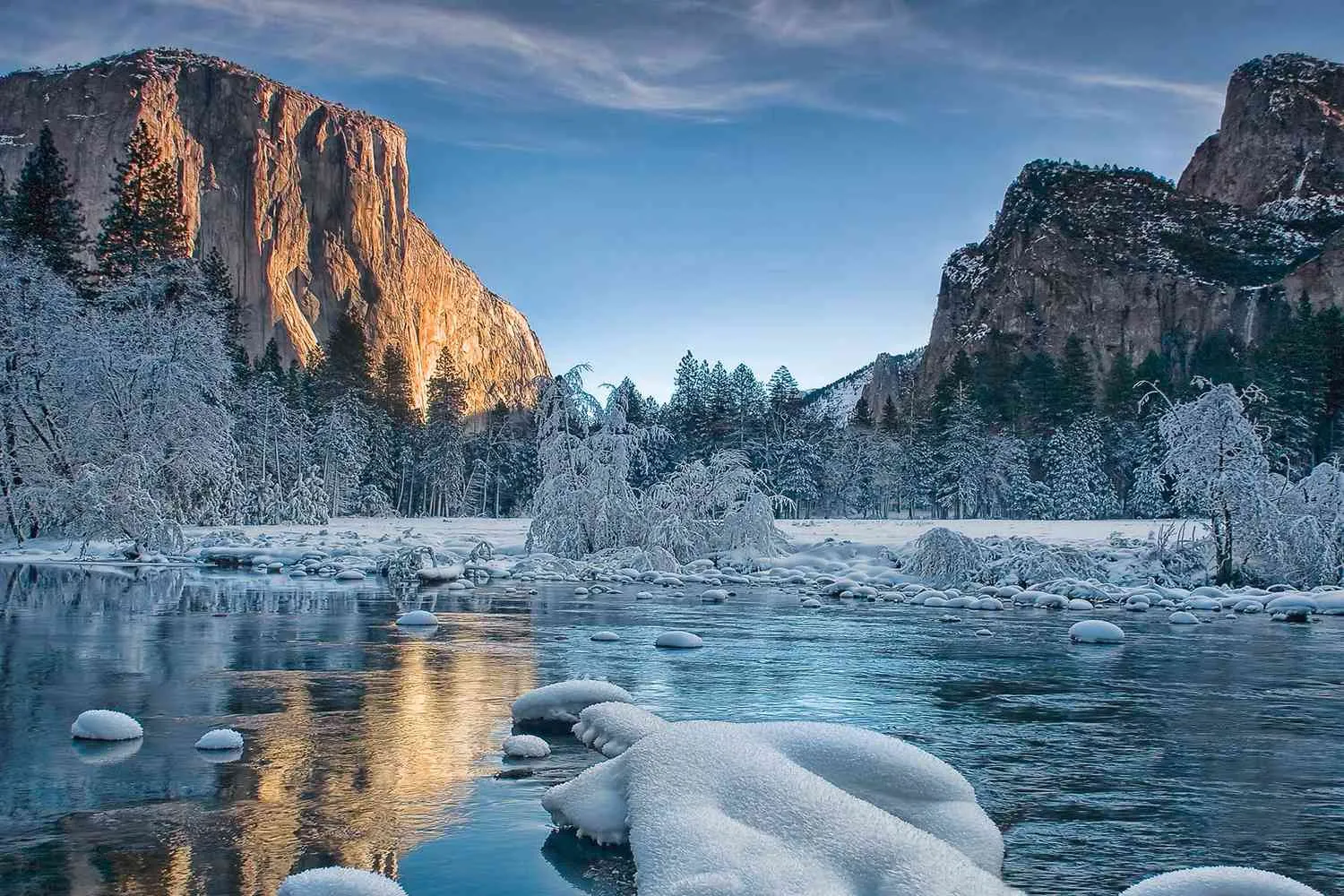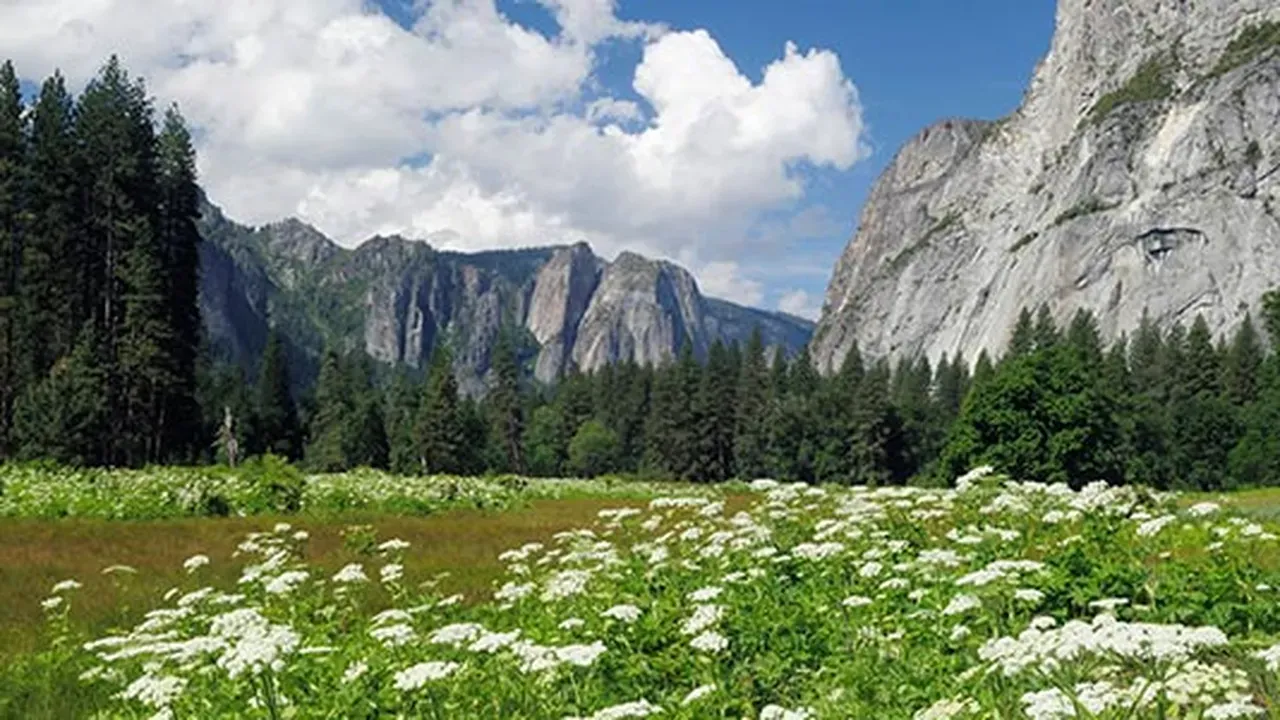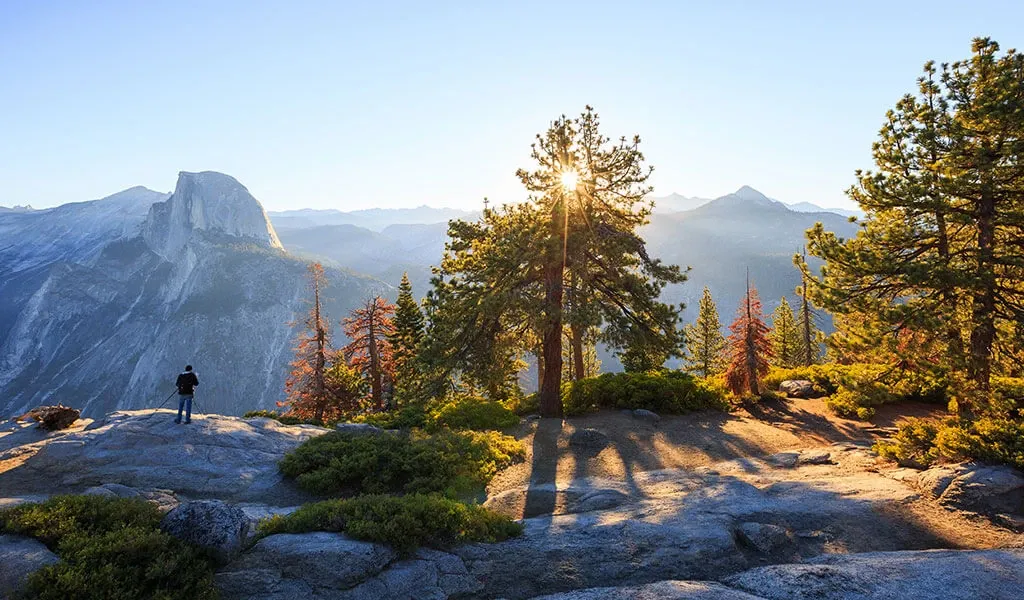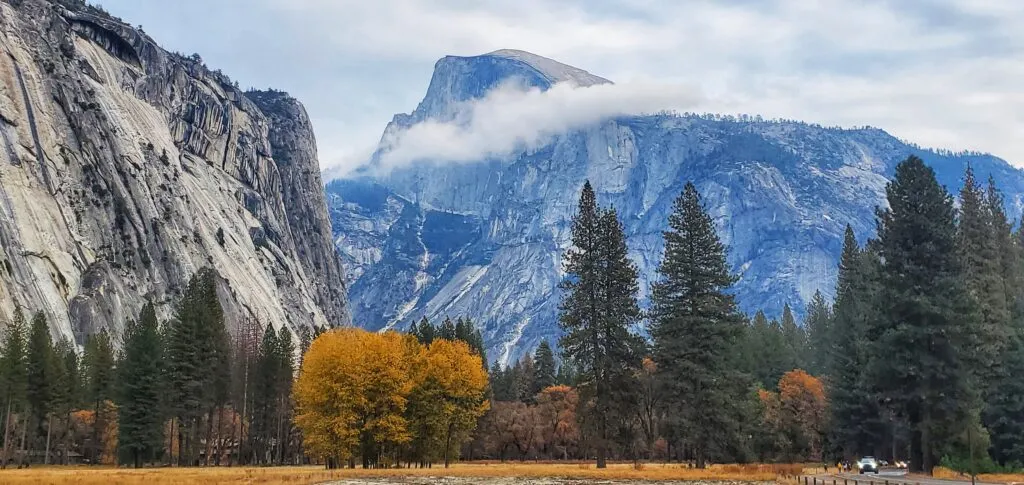If you are planning a trip to Yosemite National Park, the first thing you need to understand is the Yosemite National Park weather. This vast and varied region experiences a wide range of climate conditions throughout the year, and knowing what to expect will significantly enhance your trip. The park’s natural wonders, from roaring waterfalls and massive granite cliffs to peaceful meadows and towering forests, are deeply affected by weather patterns.
By understanding the Yosemite National Park weather, you can plan your itinerary around the best times to visit specific sites, prepare properly for trail conditions, and avoid common travel pitfalls like unexpected snow or road closures. This comprehensive guide of the National Park Shops will help you navigate the monthly weather shifts so that each moment you spend in the park is both comfortable and memorable.
Understanding Yosemite’s Climate Range
The Yosemite National Park weather varies significantly depending on the time of year and elevation. Yosemite Valley is situated at approximately four thousand feet, while certain areas of the park rise above ten thousand feet, resulting in a wide range of localized climates. Summer tends to bring warm, dry days, whereas winter delivers snowfall and freezing conditions, particularly at higher spots. Understanding the elevation where you plan to visit is essential for making sense of weather forecasts.
Due to the changes in elevation, you might enjoy bright sunshine in Yosemite Valley while snow still covers the upper regions. The Yosemite National Park weather can also change suddenly, with conditions shifting dramatically in a short span of time. It is wise to check updated weather information before setting out on any hike or scenic drive. This variability allows for a diverse set of experiences, from hiking under sunny skies to enjoying quiet moments in the snow.
Yosemite National Park Weather by Season
Understanding how the weather evolves throughout the year in Yosemite is essential for trip planning. Each season presents unique conditions that can affect trail accessibility, road status, and which natural features are most vibrant.
Winter (November–February)
The Yosemite National Park weather in winter is best known for its snowfall and chilly temperatures. Yosemite Valley remains open and becomes a snowy wonderland, perfect for photography and peaceful hikes. However, higher elevations like Glacier Point Road and Tioga Road typically close due to snow accumulation. Average highs hover in the upper 40s°F (around 8°C), while lows drop below freezing.
Winter in Yosemite is also the quietest time for visitors, making it ideal for those looking for solitude and a slower pace. Snow adds a magical element to the scenery, but it also limits access. The Yosemite National Park weather this time of year demands proper clothing, insulated jackets, boots, and traction devices for icy trails.

Spring (March–May)
Spring brings vibrant transformation to Yosemite, as waterfalls surge with power from melting snow, wildflowers begin to emerge, and wildlife becomes more active after the long winter. The Yosemite National Park weather during this time is marked by dramatic transitions. In March, snow still blankets higher elevations like Tuolumne Meadows, while lower areas such as Yosemite Valley begin to warm. April and May usher in more favorable conditions, with average daytime temperatures ranging from the upper fifties to low seventies Fahrenheit, creating perfect weather for photography, moderate hikes, and riverside picnics.
Many iconic trails like Mist Trail, Lower Yosemite Falls Trail, and Mirror Lake Trail become more accessible and scenic, thanks to the increased water flow and blooming vegetation. As more roads reopen, particularly Glacier Point Road and sections of Tioga Road, visitors can enjoy wider access to panoramic viewpoints and alpine terrain. However, spring is also known for its unpredictability; late-season snowstorms and rain showers can appear suddenly. Because the Yosemite National Park weather can change quickly during spring months, visitors should pack with flexibility in mind, including waterproof outerwear, multiple clothing layers, and sturdy footwear to handle muddy or icy trail conditions.

Summer (June–August)
Summer is the most popular season to explore the park, and for good reason. The Yosemite National Park weather during summer is warm, dry, and generally very reliable, creating ideal conditions for outdoor recreation. In Yosemite Valley, daytime temperatures typically reach into the upper seventies to mid-nineties Fahrenheit, offering sunny skies and minimal rainfall. While the valley basks in sunshine, evenings remain cool, providing a refreshing balance that helps regulate daytime exertion. This dependable summer climate makes it easy to plan activities in advance without worrying about disruptive weather.
With the opening of Tioga Road and Glacier Point Road, visitors gain access to Yosemite’s breathtaking high-country vistas, alpine lakes, and lesser-traveled trails. Summer marks the time of year when every major trailhead, campground, visitor center, and concessionaire is fully operational. However, the popularity of this season also brings increased crowds, higher lodging rates, and limited availability at campgrounds and hotels. When planning your trip with the Yosemite National Park weather in mind, be sure to reserve accommodations well ahead of time and prepare for hot, sunny conditions by packing sunscreen, refillable water containers, wide-brimmed hats, and lightweight moisture-wicking clothing. Staying hydrated and protecting your skin from prolonged sun exposure is essential for enjoying summer adventures safely.

Fall (September–October)
The Yosemite National Park weather in fall offers a calm and inviting atmosphere, making it one of the most pleasant seasons to visit. Daytime temperatures typically range from the low sixties to mid-seventies Fahrenheit, while evenings cool down quickly with crisp mountain air. After the summer crowds begin to disperse, especially following the Labor Day holiday, the park becomes quieter and more serene. This provides travelers with outstanding opportunities for photography, wildlife spotting, and enjoying iconic viewpoints without the usual congestion.
One of the highlights of fall is the foliage transformation in areas such as Wawona, Yosemite Valley, and along the Merced River, where leaves turn brilliant shades of gold, amber, and red. However, the changing Yosemite National Park weather means that visitors should plan for variable conditions. By mid to late Yosemite October, higher elevation roads like Tioga Road or Glacier Point Road may close due to early snowfall or icy conditions, impacting access to certain trailheads. Packing for fall should include both warm, breathable clothing and outer layers that can withstand wind and occasional rain. Choosing this season means fewer crowds, beautiful scenery, and a rewarding balance of adventure and comfort.

When is the best time to visit Yosemite Based on Weather?
Choosing the best time to visit Yosemite depends largely on what you hope to experience, and the Yosemite National Park weather will help you decide. From roaring waterfalls to serene golden meadows, each month paints the park in a different light.
Late Spring to Early Summer for Waterfalls
If waterfalls are on your bucket list, late spring through early summer is the best time to go. Snowmelt from the Sierra Nevada fuels iconic falls like Yosemite Falls, Vernal Fall, and Bridalveil Fall. The Yosemite National Park weather during this period is warm enough for hiking but not yet at peak summer heat.
Trails are lush and rivers are full, making for spectacular photography. However, this also means slippery conditions in some areas, so traction devices and caution are necessary. Those who visit during peak waterfall season will witness some of the most stunning sights Yosemite has to offer, weather included.
>> Read More: Closest Airports To Yosemite National Park: Which is Nearest?
Summer for Full Park Access
If your goal is to explore every corner of the park, including Tuolumne Meadows and Glacier Point, summer is unbeatable. The Yosemite National Park weather is reliably warm, dry, and sunny, allowing for multi-day backpacking, rock climbing, and extended road trips across the park.
Expect higher crowds and competition for campsites, but the range of available activities makes it worthwhile. This is also the safest time to visit remote trails, as snow hazards are minimal. Because of the dependable Yosemite National Park weather, summer remains the go-to season for many first-time visitors.

Fall for Mild Weather and Fewer Crowds
Fall offers a balance of comfort and calm. The Yosemite National Park weather cools down, making hikes more enjoyable and sun exposure less of an issue. With fewer visitors, you’ll find serenity in places that are packed during summer.
Fall foliage adds to the visual appeal, especially in areas around the Merced River and Wawona. This season is also great for stargazing, with clear skies and cooler air. If you’re looking for a trip where Yosemite National Park weather and crowd levels are both favorable, fall is your best bet.
RELATED POST: 11 Best Hotels Near Yosemite National Park: Reservations Request
Current Yosemite National Park Weather Conditions and Forecast Tools
Before heading out, checking live Yosemite National Park weather reports is crucial for safe and successful planning. Due to the park’s wide range of elevations, weather can change suddenly and vary significantly between locations. Fortunately, several reliable tools provide up-to-date and location-specific forecasts. These platforms allow visitors to plan their routes, hiking times, and activities with precision.
Recommended resources for checking current Yosemite National Park weather include:
- National Park Service (NPS) Website: Offers official alerts, road closures, snowpack information, and real-time weather summaries.
- NOAA Forecast Office: Provides detailed seven-day forecasts, wind speeds, and precipitation trends for different park zones.
- Weather Underground and AccuWeather: These apps deliver GPS-targeted weather updates, hourly breakdowns, and severe weather notifications.
- Radar Tools: Use interactive radar maps to monitor approaching storms, snow bands, and temperature changes in real time.
Monitoring these tools regularly ensures that you remain informed and adaptable throughout your trip. Staying aware of the Yosemite National Park weather not only enhances your safety but also helps you make the most of your outdoor experiences, from trail selection to scenic photography timing.
Tips for Packing by Season
Packing right means enjoying your trip regardless of how the Yosemite National Park weather turns out. Below is a season-by-season breakdown of recommended items to help you stay prepared:
Winter Packing List (November to February):
- Thermal base layers (top and bottom)
- Insulated waterproof jacket and pants
- Warm gloves, beanie, and scarf or neck gaiter
- Waterproof insulated boots with thick wool socks
- Microspikes, crampons, or snowshoes for icy and snowy trails
- Hand warmers and a thermos for hot drinks
Spring Packing List (March to May):
- Layered clothing (t-shirts, long sleeves, fleece or light down jacket)
- Waterproof rain jacket and pants
- Waterproof hiking boots with good tread
- Lightweight gloves and a hat
- Sunglasses and sunscreen (especially in April and May)
- Reusable water bottle and compact umbrella
Summer Packing List (June to August):
- Lightweight, moisture-wicking clothing (shorts, tank tops, breathable shirts)
- Wide-brimmed hat or cap for sun protection
- High-SPF sunscreen and lip balm with UV protection
- Sunglasses and hydration pack or water bottles
- Sandals for camp and quick drying towels
- Light jacket or hoodie for cooler evenings
Fall Packing List (September to October):
- Layered outfits (t-shirts, flannels, midweight jacket)
- Windproof and water-resistant outerwear
- Warm hat and gloves for morning and evening hikes
- Waterproof boots with durable soles
- Compact rain poncho or packable shell
- Thermos for warm beverages and headlamp for earlier sunsets
No matter the season, it’s always smart to carry a small first aid kit, trail snacks, and a fully charged phone or GPS unit. Being well-prepared for shifting Yosemite National Park weather conditions ensures both safety and comfort while exploring the park.
How weather affects Yosemite activities
The Yosemite National Park weather is a key factor in shaping the range of outdoor activities available throughout the year. Each season brings distinct opportunities and limitations, making it crucial to plan your adventures based on current and expected weather conditions.
During the winter months, the landscape is transformed by snow, offering incredible opportunities for snowshoeing, cross-country skiing, and serene walks through Yosemite Valley. The quietness of the season also makes it ideal for photography and wildlife observation, although much of the high country becomes inaccessible due to snow-covered roads and trailheads.
In spring and early summer, the melting snow feeds Yosemite’s world-famous waterfalls, creating the most dramatic and powerful cascades of the year. Popular trails such as Mist Trail and Vernal Fall become immersive, mist-filled hikes surrounded by vibrant greenery. This is also the time to see blooming wildflowers and newborn wildlife along lower-elevation routes.
Late summer brings drier, more stable Yosemite National Park weather, which opens up the backcountry for multi-day hiking and backpacking adventures. This is the safest time to explore high-elevation trails in areas like Tuolumne Meadows and the John Muir Trail, as lingering snow has melted and river crossings are more manageable.
Fall is an underrated gem for visitors. As the air cools and crowds thin out, the park becomes quieter and more peaceful. Photographers and wildlife enthusiasts will appreciate the golden foliage and soft lighting, while hikers benefit from crisp weather and improved trail solitude. Matching your itinerary to the seasonal Yosemite National Park weather not only enhances enjoyment but also ensures safety and practicality during your time in the park.
>> Read More: Campgrounds At Yosemite: Explore The Best Options
Conclusion
No matter when you visit, understanding the Yosemite National Park weather is key to a successful trip. Each season has its own character, from snow-capped serenity in winter to roaring waterfalls in spring and open trails in summer. Fall rounds it out with golden hues and fewer crowds. By using this guide to align your interests with the weather, you’ll make smarter decisions about what to pack, where to go, and what to expect.
>> Read More:

